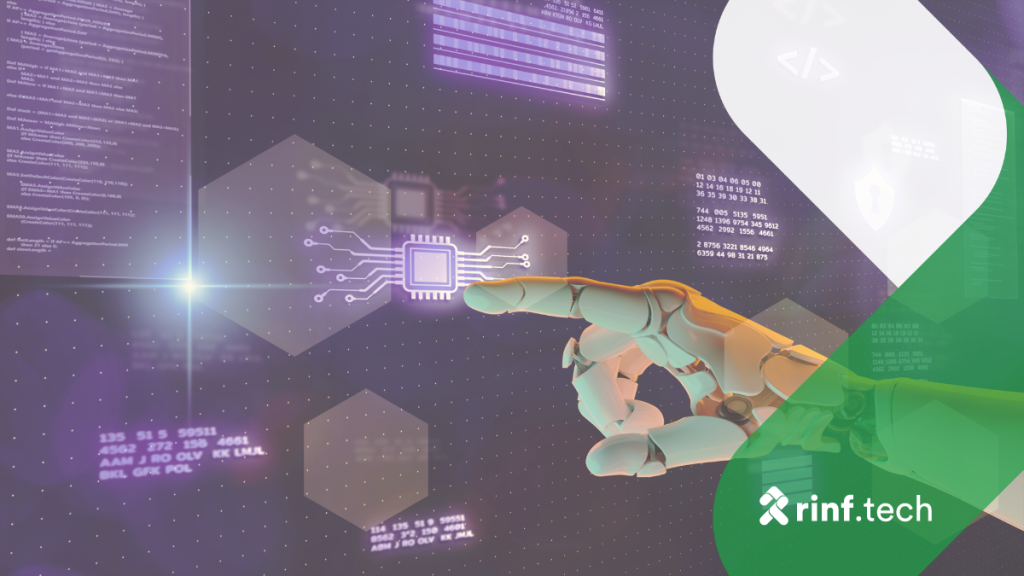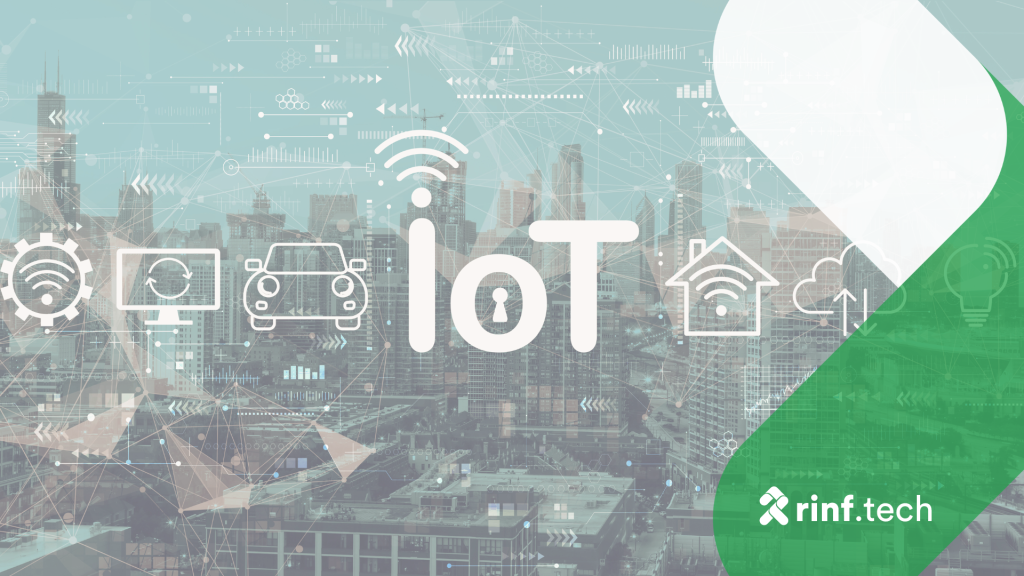
How AI and IoT Integration Creates Smarter Ecosystems
Exploring how AI IoT development impacts smart homes, smart manufacturing, and smart cities.
IoT device onboarding is a key process that involves connecting and configuring these devices to ensure seamless integration into existing networks and systems. This process is particularly important as the number of connected devices is expected to exceed $75 billion by 2025, driven by advancements in technology and the increasing demand for smart solutions across industries.
Onboarding not only ensures that devices are operational but also that they adhere to security protocols, providing a robust foundation for further data-driven operations. Understanding and addressing industry-specific needs during the IoT device onboarding process is not just crucial–it’s the key to success. Different industries have unique requirements and challenges that must be addressed to ensure the successful deployment of IoT solutions. For instance, the manufacturing sector prioritizes reliability and uptime, while the healthcare industry focuses on patient data privacy and regulatory compliance. By tailoring onboarding processes to meet these specific needs, businesses can enhance device performance, ensure compliance with industry standards, and improve overall operational efficiency.
This article delves into the IoT device onboarding requirements, challenges and implementation best practices across smart home, industrial settings, and healthcare.
Smart home devices are designed to enhance the convenience, efficiency, and security of residential living spaces. Key characteristics of these devices include user-friendliness, interoperability, scalability, and energy efficiency.
User-friendliness is essential, as these devices are often intended for the general public who may not possess technical expertise. They are typically plug-and-play, requiring minimal setup effort from the user.
Interoperability is another crucial feature, ensuring that devices from different manufacturers can seamlessly integrate and communicate within a unified smart home ecosystem. This is increasingly important as consumers prefer solutions that work across platforms like Amazon Alexa, Google Home, and Apple HomeKit.
Scalability allows users to expand their smart home setup by adding new devices without extensive reconfiguration.
Lastly, energy efficiency is another significant consideration, as many smart home devices are designed to optimize power usage, contributing to sustainability efforts and reducing utility costs.
The onboarding process for smart home devices can present several challenges.
One common issue is Wi-Fi connectivity, where devices may struggle to connect to home networks due to signal interference or limited range. This can be particularly tough in larger homes or those with thick walls obstructing wireless signals.
Additionally, the diversity of device types poses a challenge, as each device might have its unique setup procedure and requirements. This diversity can complicate the user experience, making the process frustrating and time-consuming.
Furthermore, ensuring a positive user experience is critical, because complex or unintuitive interfaces can deter users from fully utilizing their smart home devices.
Security is also a major concern, with the need to protect devices from unauthorized access and cyber threats.
Several best practices can be employed to overcome these challenges and ensure a smooth onboarding process. Pre-configured devices can significantly reduce setup time and complexity, allowing users to start using their devices with minimal effort. Mobile app-based setup processes provide an intuitive, step-by-step guide, making connecting and configuring devices easier. Visual instructions, whether through AR/VR apps or printed guides, can simplify the process by offering clear, easily understandable directions.
Implementing robust security measures, such as solid encryption and multi-factor authentication, can safeguard devices against potential threats. Additionally, device manufacturers should focus on continuous updates and support to address any issues that may arise post-setup, ensuring a seamless and secure user experience.
IIoT devices are essential to modern manufacturing and industrial processes. They are distinguished by their focus on security, reliability, and scalability. Security is vital asthese devices often handle sensitive data and control critical infrastructure, needing robust protection against cyber threats.
IIoT devices are designed for high reliability, ensuring continuous operation in harsh industrial environments where downtime can lead to significant financial losses. Scalability is another key feature, allowing the seamless addition of new devices to expand operations without disrupting existing systems. The global IIoT market is expected to reach $286.3 billion by 2029, driven by the increasing adoption of advanced analytics and automation technologies.
Onboarding IIoT devices in industrial settings involves several complex challenges, particularly in the face of increasing cyber threats. One major issue is dealing with complex network configurations. Industrial environments often have layered and multifaceted networks that require precise integration of new devices.
Another significant challenge is ensuring device security. Robust security measures are crucial to protect data integrity and prevent unauthorized access. Additionally, integrating new IIoT devices with legacy systems can be difficult, as older equipment may not support modern communication protocols, requiring custom solutions or middleware to bridge the gap.
Several solutions can be implemented to address these challenges and ensure robust IoT onboarding in the industrial settings. Zero-touch architecture is a promising approach, enabling automatic configuration and deployment of devices without manual intervention. This method simplifies the onboarding process and reduces the risk of human error. Automated configuration tools are also valuable, allowing for efficient setup and management of multiple devices and streamlining the integration process.
Implementing comprehensive security protocols, including encryption, authentication, and continuous monitoring, safeguards IIoT networks from cyber threats. Additionally, leveraging scalable and flexible platforms can facilitate the seamless addition of new devices, ensuring that the IIoT infrastructure can grow in line with business needs.
We at rinf.tech partnered with a leading global technology company to develop a complex IoT device onboarding solution tailored for manufacturing plants. The project aimed to implement a universal protocol that facilitates zero-touch onboarding of IoT devices, ensuring they integrate seamlessly into enterprise networks. This solution is focused on creating a reliable and secure system that enhances both safety and operational efficiency.
Key highlights of the project include the implementation of a comprehensive Manufacturer Authorized Signing Authority (MASA) solution for secure device authentication and developing a user-friendly REST API to simplify onboarding and management of IoT devices, including batch operations. The solution also supports multiple tenants with individual identity providers, aligning with the client’s identity management strategy to allow precise access control.
We also built an “always-up” architecture for global distribution across multiple hosting sites and were responsible for the end-to-end project management and execution, ensuring the successful project completion.
This successful collaboration not only met our client’s immediate needs but also paved the way for future opportunities and further collaboration, demonstrating our extensive expertise in delivering advanced IoT solutions.
Healthcare IoT devices are uniquely positioned at the intersection of technology and patient care. This unique position demands meticulous attention to patient privacy, regulatory compliance, and data security. The global healthcare IoT market is expected to reach $2890.2 billion by 2028, driven by the increasing adoption of connected health devices and telemedicine solutions.
Ensuring patient privacy is paramount when onboarding IoT devices in healthcare settings. These devices often handle sensitive personal health information. In the United States, for instance, it must be protected under laws such as the Health Insurance Portability and Accountability Act (HIPAA). Regulatory compliance and data security are also critical factors, with healthcare devices needing to adhere to strict guidelines and prevent breaches that could compromise patient safety and confidentiality.
The onboarding of IoT devices in healthcare settings presents several challenges. One significant limitation is ensuring device compatibility with existing medical systems, as healthcare environments often comprise a mix of old and new technologies.
User access control is another critical challenge, requiring robust authentication mechanisms to ensure that only authorized personnel can access sensitive patient data. Data encryption is necessary to protect information during transmission and storage, but it must be implemented in a way that does not impede the functionality of healthcare devices.
Additionally, the complexity of healthcare IT infrastructures can complicate the integration process, requiring specialized knowledge and tools to ensure seamless operation.
Several best practices should be followed to ensure secure and compliant onboarding of healthcare IoT devices. Strong authentication tools, such as multi-factor authentication, can help safeguard access to devices and data. Secure data transfer protocols, like TLS and SSL, are essential for protecting data in transit.
User training on security procedures is crucial to ensure that healthcare professionals understand and adhere to best practices for data protection. Compliance with regulations such as HIPAA is mandatory, requiring devices and systems to meet specific data protection and privacy standards.
Additionally, ongoing monitoring and maintenance are necessary to address any security vulnerabilities that may arise post-onboarding.
Effective IoT device onboarding ensures the seamless integration of various devices into a healthy ecosystem. Each sector has its unique requirements and challenges such as:
Best practices such as using pre-configured devices, mobile app-based setups, and robust security protocols are not just options, but reassurances. They significantly improve the onboarding experience and ensure operational efficiency and security, instilling confidence in businesses deploying IoT devices.
For organizations looking to maximize the potential of their IoT deployments, understanding and addressing the unique onboarding challenges and requirements of different industries is essential. They can ensure the secure, efficient, and seamless integration of IoT devices by employing best practices and leveraging the expertise of technology partners like rinf.tech to help them drive innovation and operational excellence.
Let’s talk.

Exploring how AI IoT development impacts smart homes, smart manufacturing, and smart cities.

Exploring how embedding AI into edge devices enhances decision-making processes and revolutionizes interactions within the physical world, driving efficiencies across numerous industries.

Check out 10 actionable tips for securing your IoT ecosystem.